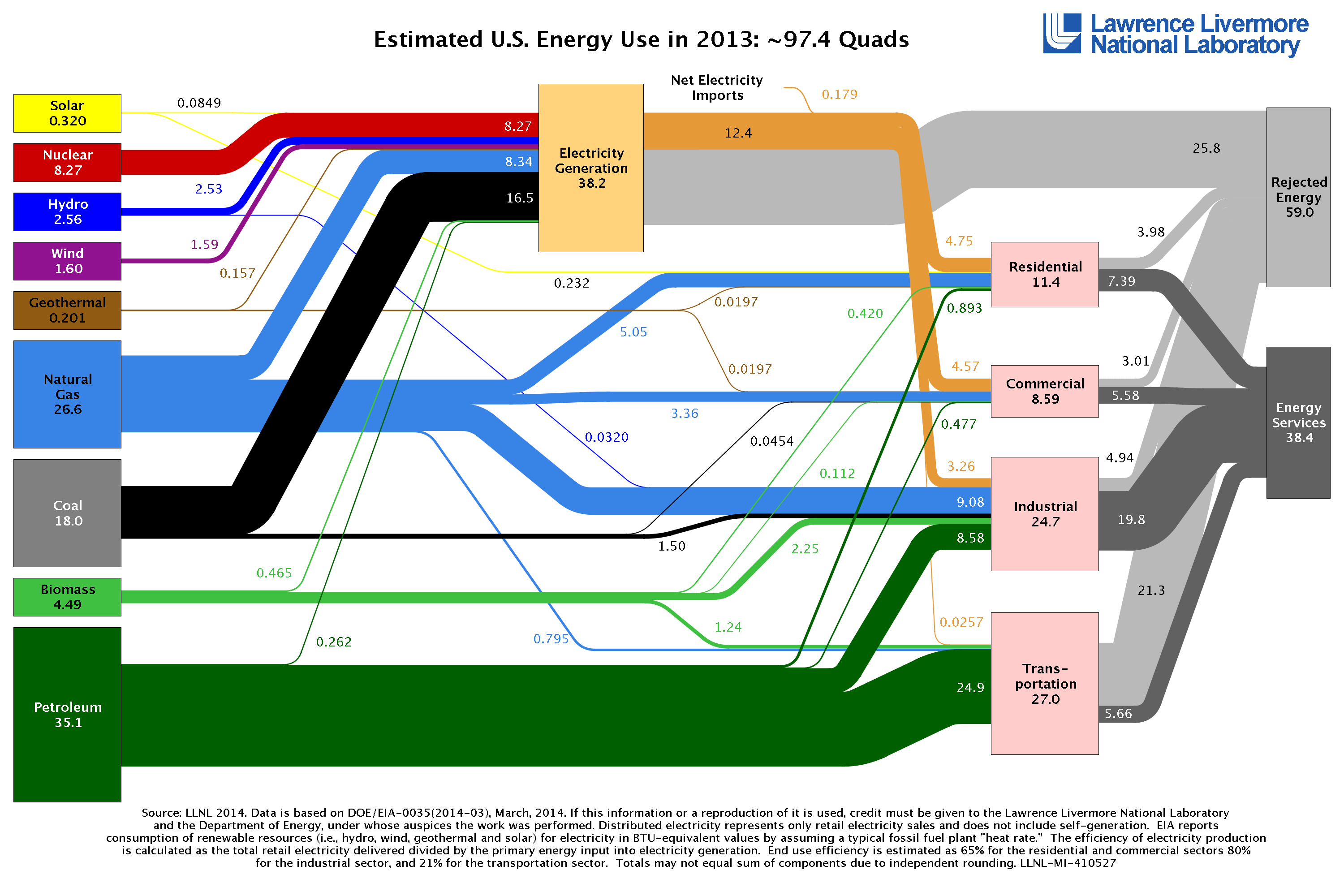I solved the energy puzzle for the U.S. with the help of two EPA Innovation Team members. We knocked it out in about 15 minutes.
We were playing Generate! The board game was developed by several EPA researchers as a way for students to learn about the intricacies of this country’s energy complex, from energy producers to end-use sectors. The game also helps players understand the links between the environment and energy, as well as the massive amounts of waste in the system.
The chart at the top of this post, by the Lawrence Livermore National Laboratory and the U.S. Department of Energy, demonstrates the breakdown of energy use in 2013. One-third of the energy generated for the residential and commercial sectors goes to waste. In the transportation sector, it’s 80 percent.
Generate! teams get colored cards with a mix of energy options – nuclear, coal, wind, natural gas, solar – that each have numbers to indicate cost. The numbers are generic units but designed from real-world measures to show the relative cost of different types of electricity generation units. Players have to consider building and purchase price, annual operations and maintenance, and carbon production.
Like golf or cross country, the lowest score wins.
Our first round was played with no penalties for carbon production. My team aced the competition because we had lots of existing coal power plant cards with zero purchase costs and plenty of cheap natural gas units.
However, the game changed quickly when the organizer shifted the math to account for how energy use and production affects the environment, including greenhouse gas emissions and impacts on the water supply.
A problem as multifaceted as the energy use mix of a large country can’t be simplified into one game, but Generate! can spark discussions in classrooms. The point is not about advocating for a no-carbon economy, it’s about the much larger issue: the challenges and trade-offs energy producers and policy makers face.
Teachers who want to open up this kind of conversation can find instruction guides, rules, and printable boards and game pieces. Try not to have too much fun in the learning process.
Dustin Renwick works in conjunction with the Innovation Team in the U.S. Environmental Protection Agency’s Office of Research and Development. The opinions expressed here are the author’s and do not reflect EPA policy, endorsement, or action.
Dustin Renwick is part of the GovLoop Featured Blogger program, where we feature blog posts by government voices from all across the country (and world!). To see more Featured Blogger posts, click here.





AWESOME!
Thanks for reading, Juana — pass along to any teachers you might know.
The simplest and most economical action a homeowner can take is to upgrade to a geothermal heat pump either at initial construction or when replacement is needed. Six to eight feet below the surface it is 55 degrees F year round. A consistent 24×365 limitless virtually-free source of energy that can be tapped into locally by anyone. This will reduce the electricity requirements per home, that will eventually be needed in the future as we transition to electrically recharged vehicles, without having to massively upgrade the high voltage power lines across America. Does this game take transmission lines (and other forms of distribution) into the mix?
Hey Ralph – I’m not sure if Generate! accounts for transmission/distribution, but there’s much more info here –> http://www.epa.gov/research/airscience/hands-on.html
I used to have a public health client, and one day they sent my team the board game “Pandemic.” It was an amazing way to “live” an epidemic and have to think creatively about how to solve it. I’m all for more games!
I think the “serious gaming” movement is still underrated / below the radar in government, but there are people doing good work. Games can be great teaching tools!